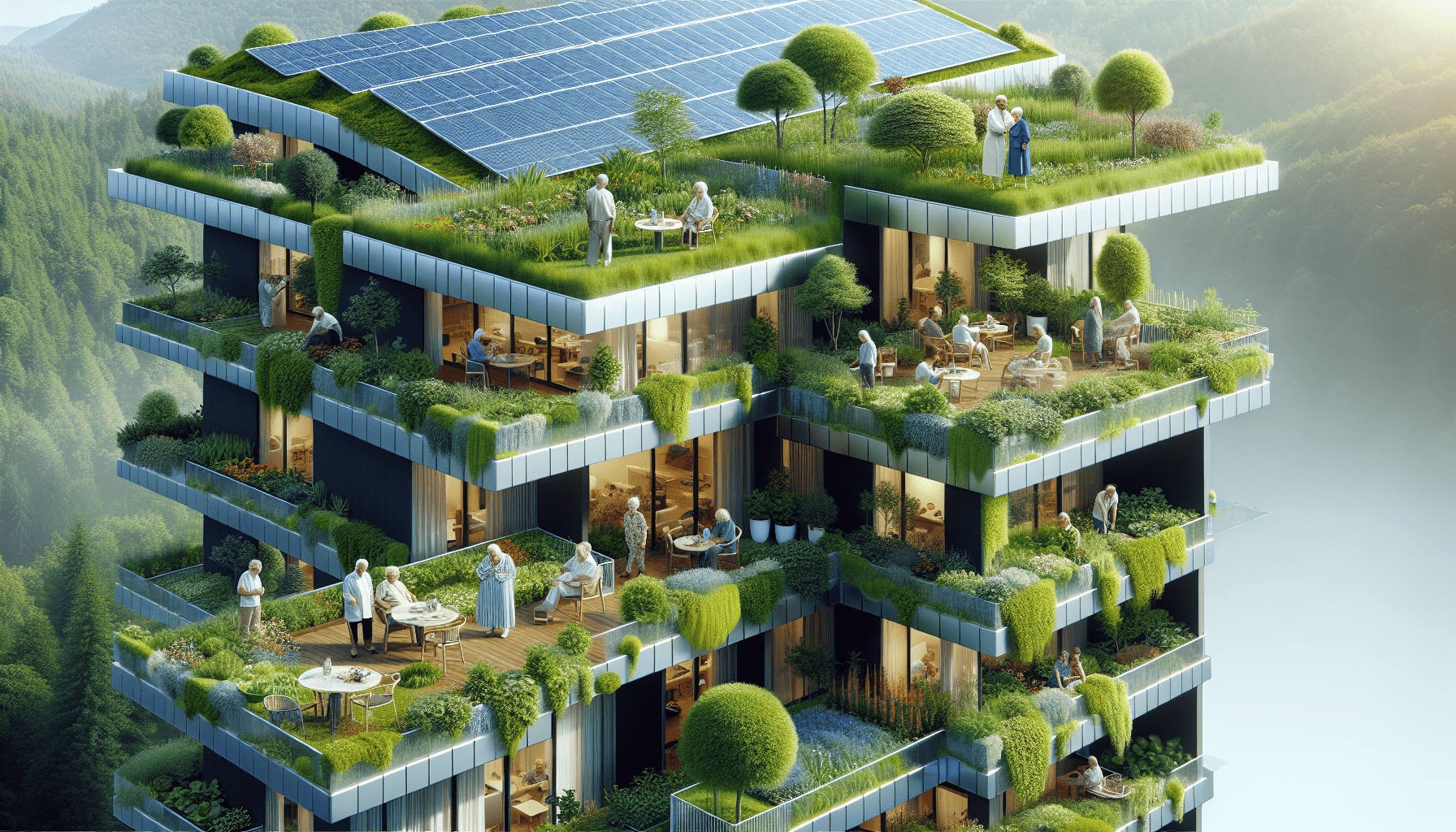In our latest exploration, “How Does Sustainable Architecture Support Aging Populations?”, we delve into the vital intersection of eco-friendly design and the needs of our aging communities. As we age, our requirements for accessibility, comfort, and safety evolve, and it’s essential that our built environments adapt alongside us. By utilizing sustainable architecture, we can create spaces that are not only kinder to our planet but also enhance the quality of life for older adults. From energy-efficient homes equipped with smart technology to green spaces that promote physical and mental well-being, we examine how thoughtful, sustainable design can ensure our aging population thrives. Have you ever wondered how sustainable architecture can support aging populations? As the global demographic shifts and the number of older adults continues to rise, it becomes increasingly important to explore how our built environments can better accommodate their needs. Sustainable architecture, with its emphasis on environmentally friendly and socially conscious design principles, offers promising solutions to support aging populations.

Understanding Sustainable Architecture
Sustainable architecture is not just about creating eco-friendly buildings but also about designing spaces that promote well-being for all inhabitants. It involves the thoughtful integration of energy efficiency, renewable resources, and environmentally friendly practices. It’s crucial to consider long-term human health, which brings us to the importance of designing spaces that accommodate the needs of our aging population.
Principles of Sustainable Architecture
Let’s break down some key principles of sustainable architecture and how they might benefit older adults:
- Energy Efficiency: Sustainable buildings are designed to reduce energy consumption. This can include better insulation, energy-efficient lighting, and smart home technologies that adjust heating and cooling.
- Use of Renewable Resources: The incorporation of solar panels, wind turbines, or geothermal heating systems reduces reliance on non-renewable resources. This not only saves money but also ensures a more stable and predictable environment which can be comforting to older adults.
- Water Conservation: Efficient water use through rainwater harvesting, low-flow fixtures, and greywater recycling can provide a reliable water supply which is crucial for health and hygiene.
- Quality Indoor Environment: Better air quality, natural lighting, and acoustics are designed to enhance indoor environments, reducing health issues commonly experienced by older adults such as respiratory problems or depression.
- Universal Design: Creating spaces that are accessible to everyone, regardless of age or mobility, ensures that older adults can navigate their living spaces with ease.
The Connection Between Aging and Built Environments
As we age, our physical, sensory, and cognitive abilities may decline. Therefore, the design of our living spaces plays a crucial role in maintaining our independence and quality of life. Sustainable architecture offers solutions to many of the challenges faced by aging individuals.
Aging in Place
One of the primary goals for many older adults is to age in place, meaning to live in their own home safely and independently for as long as possible.
Features Supporting Aging in Place
Let’s look at some features of sustainable architecture that support aging in place:
- Single-Level Living: Homes designed without stairs or with minimal levels make daily routines easier and safer.
- Non-Slip Flooring: Materials that prevent slipping reduce the risk of falls, a common concern for older adults.
- Wide Doorways and Hallways: Providing enough space for wheelchairs or walkers ensures mobility is not hindered.
- Adjustable Counters and Cabinets: Installing amenities that can be moved or adjusted for sitting or standing makes kitchens and bathrooms more accessible.
Community Integration
Another facet of supporting aging populations is fostering community integration. Sustainable architecture often promotes shared spaces and communal living, which help reduce social isolation.
Benefits of Community-Oriented Design
- Shared Green Spaces: Parks and gardens encourage outdoor activities that are beneficial for mental and physical health.
- Community Centers: Providing spaces for socializing improves social ties and emotional well-being.

Specific Design Elements Supporting Older Adults
Smart Home Technologies
Smart home technologies have become instrumental in supporting the independence of older adults. These technologies can be integrated into sustainable architecture to create a safer and more convenient living environment.
Examples of Smart Technologies
- Automated Lighting: Lights that operate based on motion sensors can prevent accidents in dimly lit areas.
- Health Monitoring Systems: Devices that monitor vital signs and send alerts to caregivers enhance safety and provide peace of mind.
- Telehealth: Systems that facilitate remote healthcare can be installed to ensure ongoing access to medical care without requiring travel.
Ergonomic and Safe Design Features
Ergonomics and safety are paramount when designing for aging populations. Sustainable architecture takes into account the needs for comfort and safety to enhance the living experience for older adults.
Examples of Ergonomic Features
- Supportive Furniture: Chairs, beds, and workspaces designed to reduce strain on joints and muscles.
- Bathroom Safety: Installing grab bars, walk-in tubs, and emergency call systems.
- Kitchen Accessibility: Lowering countertops and cupboards to ensure ease of access.
Financial and Environmental Benefits
Sustainable architecture not only caters to the well-being of aging populations but also offers financial and environmental benefits. These advantages make it feasible and attractive to adopt such designs broadly.
Cost Savings
Sustainable buildings can significantly reduce living costs due to their efficient use of energy and resources. For older adults, who may be living on a fixed income, these savings can make a world of difference.
Cost-Saving Features
- Energy Efficiency: Lower utility bills through efficient insulation, heating, and cooling.
- Durability: Sustainable materials often have a longer lifespan, reducing the need for costly repairs or replacements.
Environmental Impact
Reducing the environmental footprint is another key aspect of sustainable architecture. Older adults, who have witnessed various changes in environmental policies over decades, often appreciate these efforts as part of leaving a healthier planet for future generations.
Environmentally Friendly Practices
- Reduced Waste: Using recycled or upcycled materials reduces waste.
- Sustainable Landscaping: Native plants and xeriscaping decrease water use and maintenance.

Policy and Community Planning
To fully leverage sustainable architecture in supporting aging populations, policies, and community planning play an influential role.
Inclusive Policies
Governments and local authorities need to implement policies that support the development of sustainable and age-friendly living environments.
Examples of Supportive Policies
- Incentives for Green Building: Tax credits or subsidies for builders who incorporate sustainable practices.
- Regulations for Accessibility: Building codes that require features making homes more accessible for people with disabilities.
Community-Based Solutions
Communities must work together to create environments that support the well-being and independence of older adults.
Community Initiatives
- Greenfield Developments: New, sustainable communities built in previously undeveloped areas.
- Retrofits and Renovations: Upgrading existing buildings to meet sustainable and accessibility standards.
Challenges and Future Directions
While sustainable architecture offers numerous benefits, there are still challenges that need addressing. These include the initial cost of building or retrofitting for sustainability and accessibility, as well as a general lack of awareness or prioritization of these issues.
Addressing Cost Barriers
Investment in sustainable architecture might seem high initially, but this cost can be offset by long-term savings in utility and maintenance expenses. Financing options, such as government grants or long-term mortgage planning, can also help spread these costs.
Financial Supports
- Government Grants: Funds allocated specifically for sustainable and accessible housing projects.
- Public-Private Partnerships: Collaborative efforts between governments and private entities to fund and develop sustainable communities.
Promoting Awareness
Education and advocacy are crucial for driving forward the agenda of sustainable architecture for aging populations. This can be achieved through community outreach, professional training, and media campaigns.
Education and Advocacy
- Community Outreach Programs: Informing older adults and their families about the benefits of sustainable living spaces.
- Professional Training: Educating architects, builders, and policymakers on best practices for sustainable and accessible design.

Conclusion
Sustainable architecture has proven to be a multifaceted solution that not only addresses environmental concerns but also significantly enhances the quality of life for aging populations. By embracing energy efficiency, renewable resources, and universal design principles, we can create living spaces that are not only kind to our planet but also supportive of our aging loved ones.
Whether through policy changes, community planning, or individual choices, the integration of sustainable architectural practices stands as a promising way to accommodate the needs and improve the lives of aging populations. Together, we can build a future where everyone, regardless of age, can live comfortably, safely, and sustainably.



